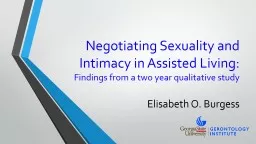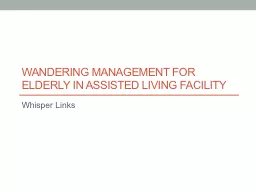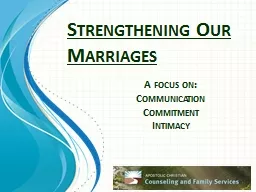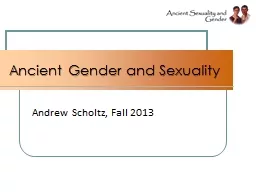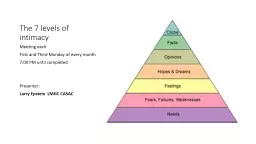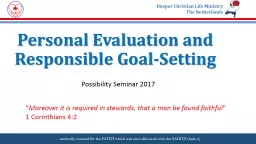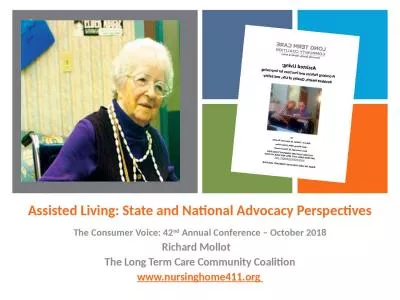PPT-Negotiating Sexuality and Intimacy in Assisted Living:
Author : mitsue-stanley | Published Date : 2017-03-20
Findings from a two year qualitative study Elisabeth O Burgess PhD Presentation for Why this topic Who am I Social Gerontologist Sexualities Scholar Sociologist
Presentation Embed Code
Download Presentation
Download Presentation The PPT/PDF document "Negotiating Sexuality and Intimacy in As..." is the property of its rightful owner. Permission is granted to download and print the materials on this website for personal, non-commercial use only, and to display it on your personal computer provided you do not modify the materials and that you retain all copyright notices contained in the materials. By downloading content from our website, you accept the terms of this agreement.
Negotiating Sexuality and Intimacy in Assisted Living:: Transcript
Download Rules Of Document
"Negotiating Sexuality and Intimacy in Assisted Living:"The content belongs to its owner. You may download and print it for personal use, without modification, and keep all copyright notices. By downloading, you agree to these terms.
Related Documents

